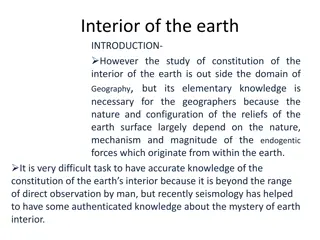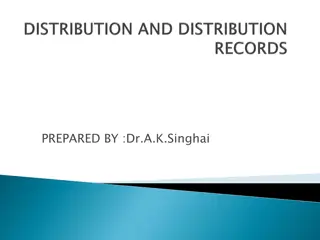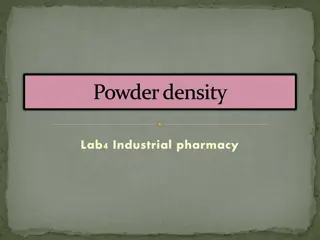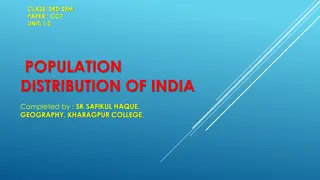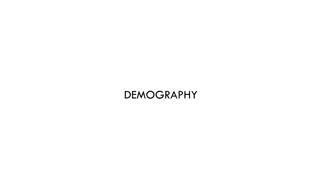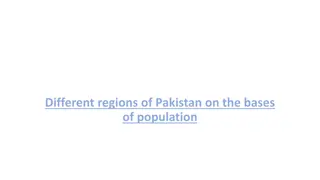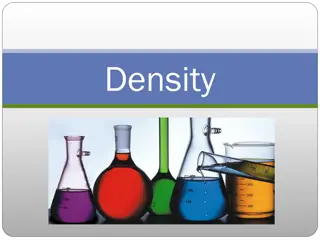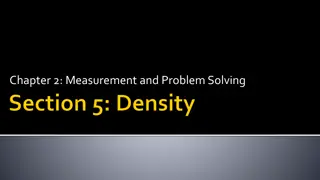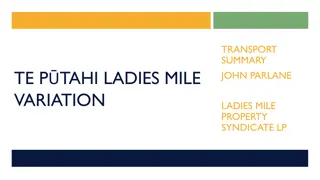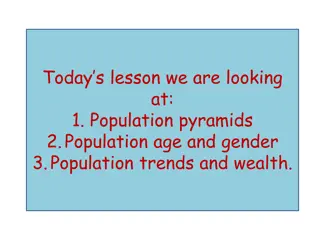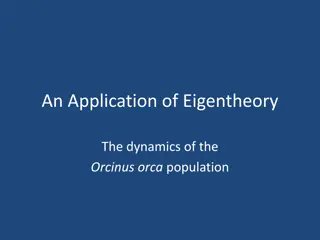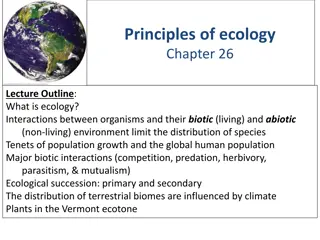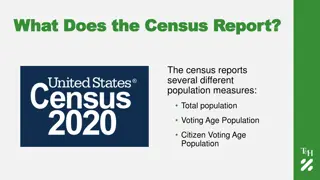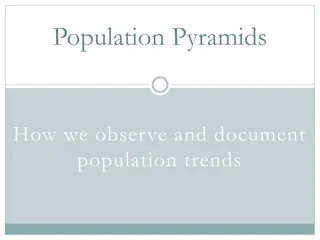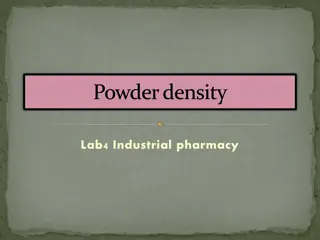Population Dynamics Study: Age, Density, Distribution
Population dynamics explore how age structure, density, distribution, and numbers change in response to environmental conditions. It delves into factors affecting population growth, such as biotic potential, environmental resistance, carrying capacity, and various growth patterns like exponential and logistic. Understanding population dynamics is crucial for conservation efforts and sustainable resource management.
Download Presentation

Please find below an Image/Link to download the presentation.
The content on the website is provided AS IS for your information and personal use only. It may not be sold, licensed, or shared on other websites without obtaining consent from the author.If you encounter any issues during the download, it is possible that the publisher has removed the file from their server.
You are allowed to download the files provided on this website for personal or commercial use, subject to the condition that they are used lawfully. All files are the property of their respective owners.
The content on the website is provided AS IS for your information and personal use only. It may not be sold, licensed, or shared on other websites without obtaining consent from the author.
E N D
Presentation Transcript
Population Dynamics Is the study of how age structure, population density, distribution, and numbers change in response to changes in environmental conditions. Most populations live together in clumps or patches. Populations can grow, shrink, or remain stable
Population Dynamics Age Structure proportions of individuals at various ages Population Density number of individuals in a population found in a particular area or volume. Immigration arrival of individuals from outside the population. Emigration leaving of individuals from population. Biotic Potential - capacity for population growth under ideal conditions. Intrinsic Rate of Increase (r) rate at which a population of a species would grow if it had unlimited resources.
Population Dynamics Populations with high intrinsic rate of increase typically reproduce early in life, have short generation times, reproduce many times, and have many offspring with each reproduction. Research reveals that no population can grow indefinitely because of limitations. Limiting factors include, space, sunlight, water, nutrients, exposure to predators, competitors, or infectious diseases. There are always limits to population growth in nature
Population Dynamics Environmental resistance - combination of all factors that act to limit the growth of a population. Biotic Potential + Environmental Resistance = Carrying Capacity (K) Carrying Capacity maximum population of a given species that a particular habitat can sustain indefinitely without being degraded.
Population Growth Exponential Growth or Geometric Growth starts slowly but then accelerates as the population increases. Plotting the number of individuals against time yields a J-shaped growth curve. Logistic Growth rapid exponential growth followed by steady decrease in population growth until the population levels off. Plotting the number of individuals against time yields a sigmoid, or S- shaped curve
Population Dynamics r - selected species have many, usually small, offspring and give them little or no parental care or protection. The high numbers of offspring help the population revive when it suffers massive losses. Opportunist species. (EX. roaches, rabbits, bacteria, algae) K - selected species reproduce later in life and have a small number of offspring with fairly long life spans. Competitor species. (EX. Large mammals, elephants, birds of prey)
Population Dynamics Genetic Diversity can affect the size of small populations. Founder effect when a few individuals in a population colonize a new habitat that is geographically isolated from other members of the population (Limited genetic diversity or variability may threaten the survival of the colonizing population) Demographic Bottleneck occurs when only a few individuals in a population survive a catastrophe such as a fire or hurricane (Population may increase but decreased genetic diversity may increase the frequency of harmful genetic diseases) Genetic Drift random changes in gene frequencies in a population that can lead to unequal reproductive success (Some individuals may breed more than others do and their genes may eventually dominate the gene pool of the population. Founder effect is one cause for genetic drift.) Inbreeding when individuals in a small population mate with one another. This can occur when a population passes through a demographic bottle neck. (Can increase the frequency of defective genes within a population)
Population Dynamics Population Density can affect Population Size Density dependent population controls include predation, parasitism, infectious disease, and competition for resources. Density independent controls are mostly abiotic. Things like a severe freeze, flood, hurricane, fire, pollution and habitat destruction, do not depend on the density of the population.
Humans not exempt from natures population controls 14thcentury the bubonic plague killed at least 25 million people in densely populated Europe. Caused by a bacterium that lived in rodents. Fleas that lived on the rodents bit humans and spread the disease. 1800 s Irish potato blight killed approximately 1 million people and another 3 million migrated away. Phytophthora infestans an oomycete decimated the potato crops which led to mass starvation. Currently AIDS is a global epidemic. Between 1981- and 2007 the virus killed more than 25 million people. It claims 2.1 million lives each year. An average of 4 deaths per minute.
The Human Population Population change = (births + immigration) (deaths + emigration) Birth Rate number of live births per 1000 people Death Rate number of deaths per 1000 people Age Structure can be used to make population and economic projections. This graph illustrates that: France shows an almost steady increase India shows rapid increase




